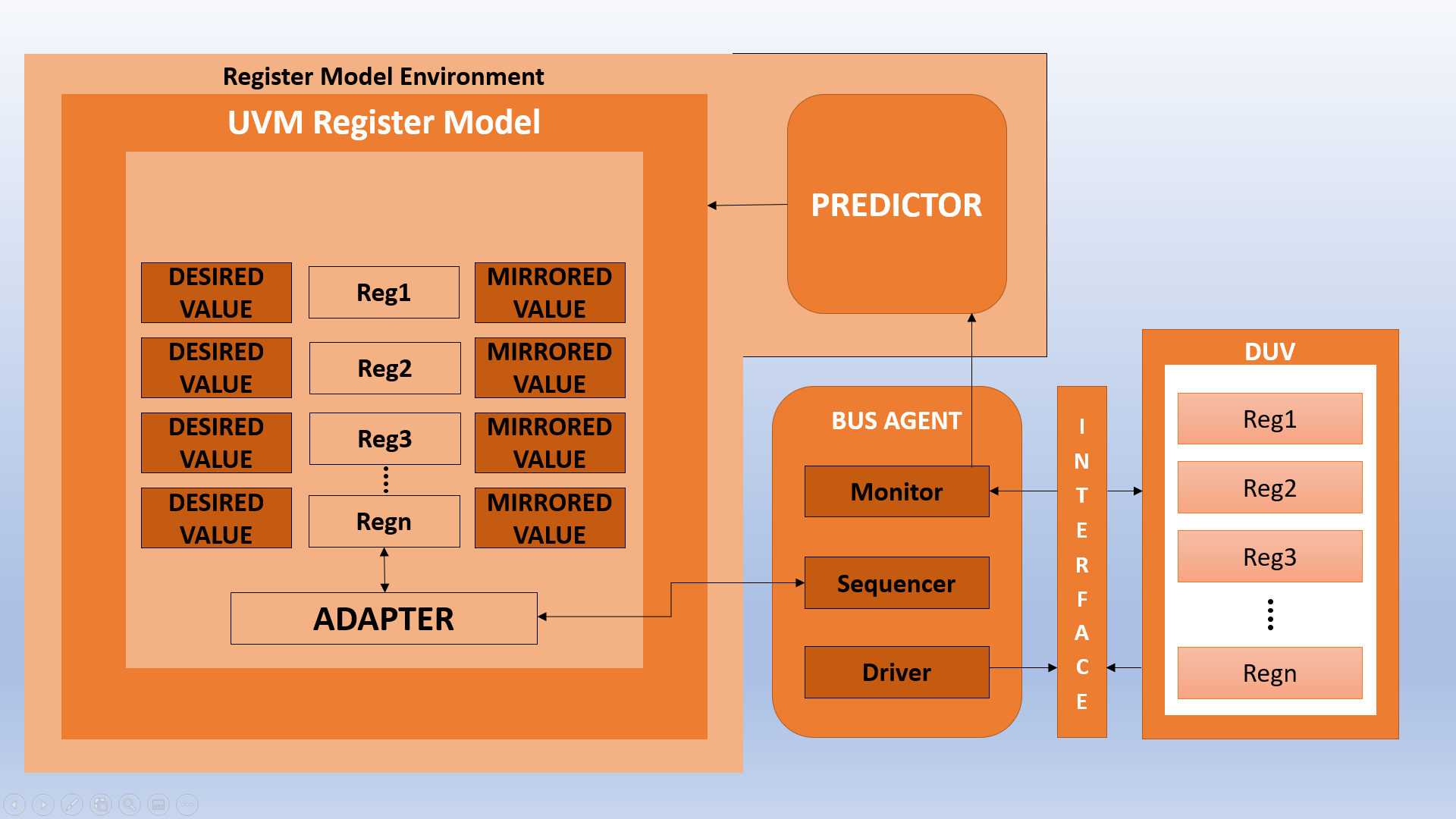Hardware verification is a critical phase in the design cycle, ensuring that complex chips and systems operate as intended. Universal Verification Methodology (UVM) has revolutionized the process, offering a standardized framework for creating robust verification environments. Among its powerful features, UVM Register Abstraction stands out as a key element, transforming the way engineers test and validate hardware designs. In this technical blog, we'll explore the intricacies of UVM Register Abstraction, the role of UVM Register Models, and the advantages they bring to the UVM Register Layer.
The Essence of UVM Register Abstraction
At the heart of UVM Register Abstraction lies the need for simplifying the interaction with hardware registers. In the world of hardware design, registers serve as data storage elements, controlling and monitoring different aspects of a chip's functionality. UVM Register Abstraction eases the process of accessing and manipulating these registers within a verification environment.

UVM Register Models: The Blueprint
UVM Register Models serve as the blueprint for the registers in your design. They abstract the low-level hardware details, presenting an interface that verification engineers can readily work with. These models encapsulate essential characteristics of registers, including their fields, access mechanisms, and behaviors. As a result, they facilitate the creation of test scenarios that closely resemble real-world usage, all while maintaining the simplicity of high-level abstraction.
The Role of the UVM Register Layer
The UVM Register Layer is where the rubber meets the road. It acts as the intermediary between the verification environment and the hardware design. Here's how it plays a crucial role:
-
Register Configuration: The UVM Register Layer allows you to configure register settings. Engineers can define characteristics such as reset values, access permissions, and field properties.
-
Register Access: Engineers can interact with registers just as if they were dealing with the actual hardware. This streamlined access enables a deeper understanding of how registers function and react to various inputs.
-
Regmodel-based Testing: UVM Register Models enable regmodel-based testing. This approach allows verification engineers to create tests based on the desired register functionality, promoting reusability and reducing the need for manual test scenario development.
-
Coverage and Automation: Achieving comprehensive coverage is paramount in verification. The UVM Register Layer simplifies this process by automating the collection of coverage metrics, ensuring that no register functionality remains untested.
Maximizing Verification Efficiency with UVM Register Abstraction
The benefits of UVM Register Abstraction are profound. By employing UVM Register Models and leveraging the UVM Register Layer, hardware engineers can streamline verification efforts. This not only accelerates the verification process but also enhances the quality and reliability of hardware designs.
-
Reduced Debugging Effort: With UVM Register Models, debugging becomes more straightforward. Errors can be traced back to specific registers and their behaviors, saving time and effort.
-
Enhanced Reusability: UVM Register Models are reusable components. Once created, they can be employed across different projects and testbenches, promoting a consistent and efficient verification process.
-
Improved Collaboration: A standardized UVM Register Abstraction ensures that the entire verification team, from RTL designers to testbench developers, speaks the same language. This alignment fosters smoother collaboration and better communication.
-
Faster Time to Market: Time is of the essence in the highly competitive hardware industry. UVM Register Abstraction accelerates the verification phase, contributing to shorter development cycles and faster time-to-market.
Challenges and Considerations
While UVM Register Abstraction offers numerous advantages, it's not without challenges. Engineers must carefully design and manage UVM Register Models to ensure accuracy and completeness. Additionally, the dynamic nature of UVM Register Abstraction requires proper synchronization and coordination in a multi-threaded simulation environment.
In conclusion, UVM Register Abstraction, in conjunction with UVM Register Models and the UVM Register Layer, represents a paradigm shift in hardware verification. This approach simplifies the verification process, enhances collaboration, and ultimately results in more reliable and efficient hardware designs. As the complexity of hardware systems continues to grow, these tools become indispensable in the pursuit of excellence in hardware verification.


No comments yet